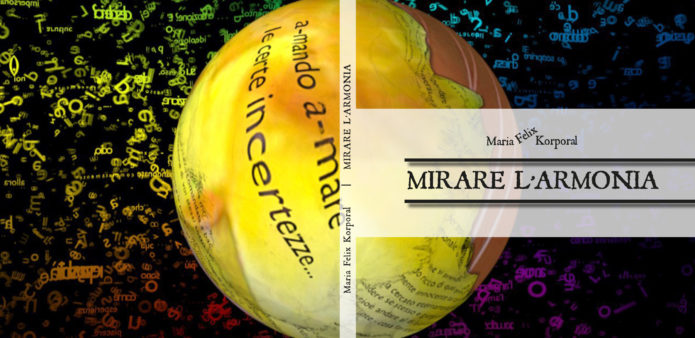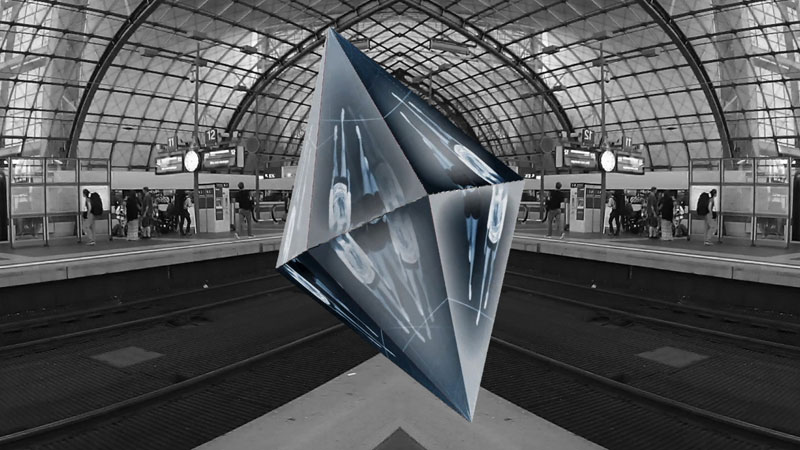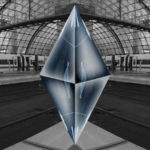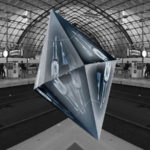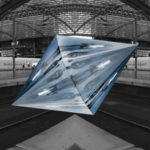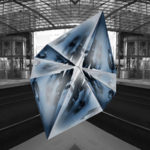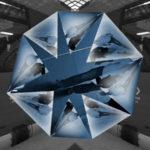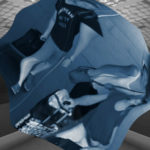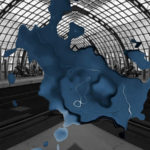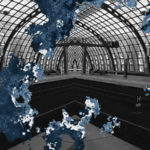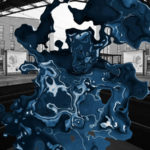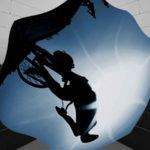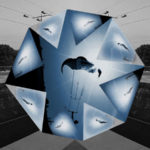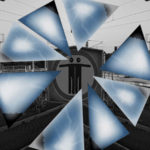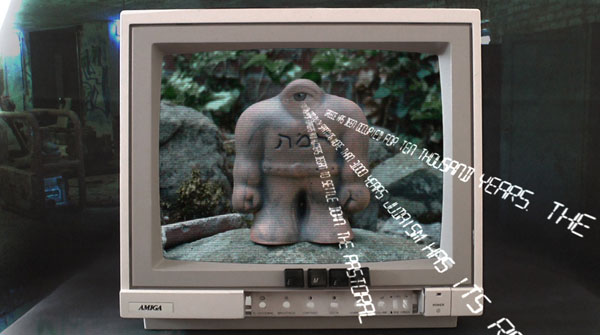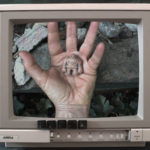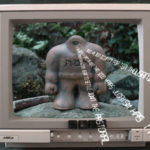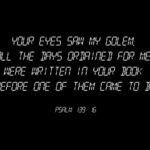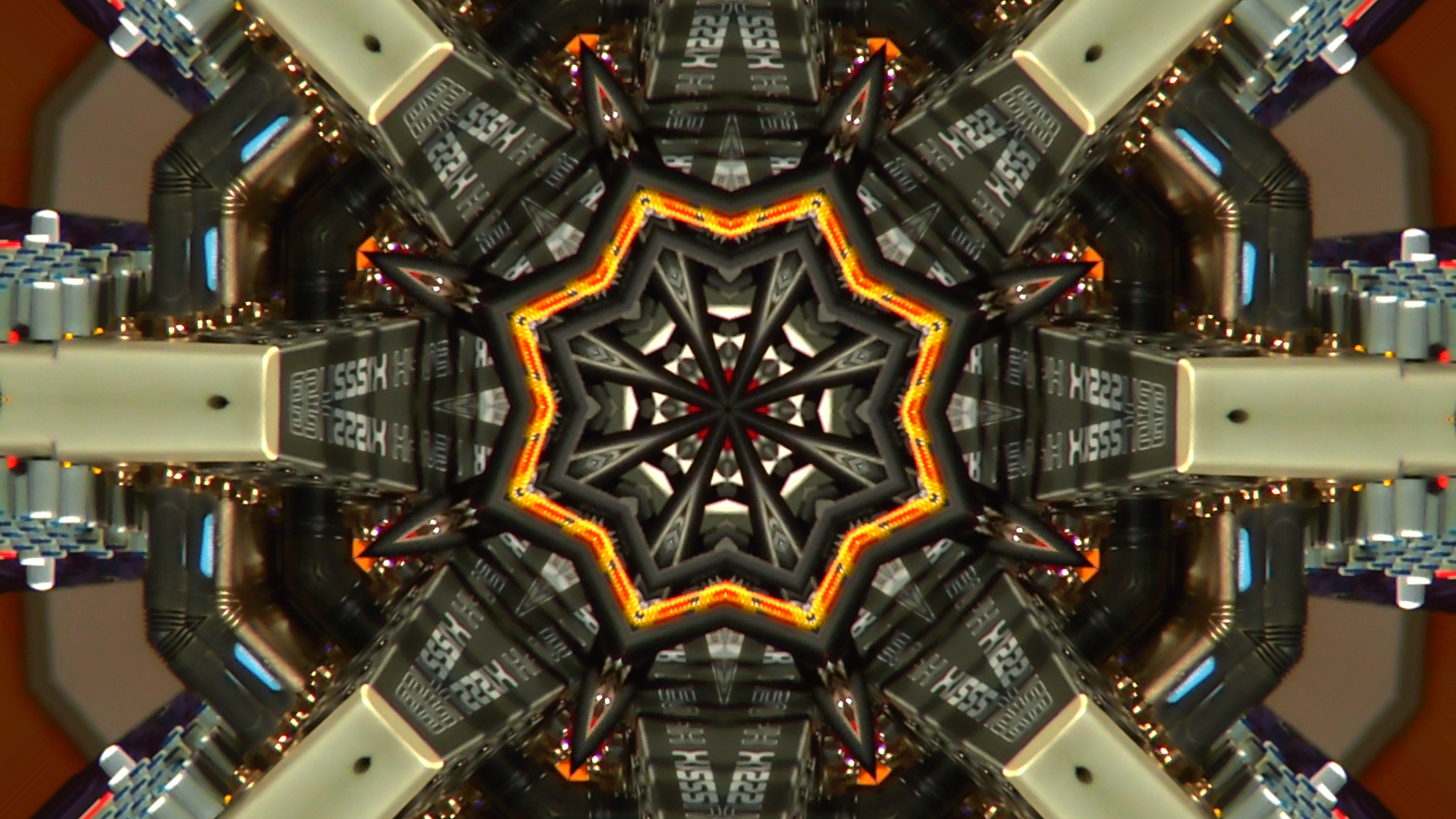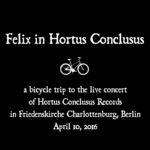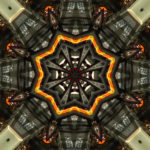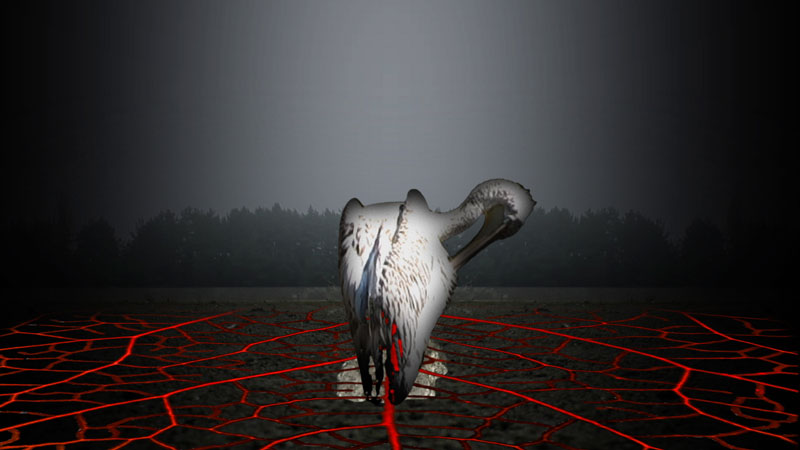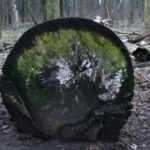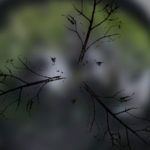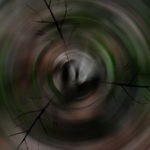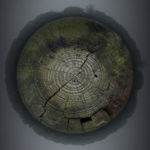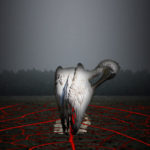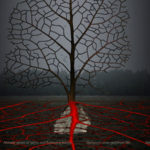A project by Mariangela De Toni for her master degree at the Academy of Arts in Bologna: three meetings/interviews and an essay on Maria Korporal, with a selection of works.
In Italian and in English.
Emiliano Pietrini
Defrosting device for apparently meaningless ink stains
The video has been created on a piece of “musique concrete” which deals with the theme of incommunicability. Composer Emiliano Pietrini (Globoscuro) constructed his music on a series of “nonsense” dialogues embraced by a carpet of sounds created with a toy piano, vocals, analog synthesizer, theremin, piano, field recordings, self-made metal percussions and old talking toys with dead batteries. Following this sound trail, video artist Maria Korporal created a visual walk in the main railway station of Berlin – a walk along a platform where all lines loose themselves in the center. Out of this vanishing point a crystal is born, in which walking and talking people are captured. The crystal turns around and splits up into more fragments, then melts into slow moving ink-like stains where all communication seems to flow together. At the end of the platform, the liquid forms become a crystal again, opening itself for a journey to continue in new times and new spaces.
The music has been written for the compilation “Italian experimental underground 015 survey vol. II” promoted by Unexplained Sounds (Raffaele Pezzella) and available at the following link: https://unexplainedsoundsgroup.bandcamp.com/album/italian-experimental-underground-015-survey-volume-ii
title: Defrosting device for apparently meaningless ink stains
technique: Experimental video and animation
length: 5’41”
year: 2015-2016
music: Abstract noise-scape for toy piano, vocals, analog synthesizer, field recordings, self-made metal percussions, theremin, piano and old talking toys with dead batteries, written and composed by Globoscuro (Emiliano Pietrini)
voices: Ilaria Fierro, Emiliano Pietrini and random field-recorded voices
video concept, camera, animazione, effetti e montaggio: Maria Korporal
- Defrosting device for apparently meaningless ink stains © Maria Korporal
- Defrosting device for apparently meaningless ink stains © Maria Korporal
- Defrosting device for apparently meaningless ink stains © Maria Korporal
- Defrosting device for apparently meaningless ink stains © Maria Korporal
- Defrosting device for apparently meaningless ink stains © Maria Korporal
- Defrosting device for apparently meaningless ink stains © Maria Korporal
- Defrosting device for apparently meaningless ink stains © Maria Korporal
- Defrosting device for apparently meaningless ink stains © Maria Korporal
- Defrosting device for apparently meaningless ink stains © Maria Korporal
- Defrosting device for apparently meaningless ink stains © Maria Korporal
- Defrosting device for apparently meaningless ink stains © Maria Korporal
- Defrosting device for apparently meaningless ink stains © Maria Korporal
- Defrosting device for apparently meaningless ink stains © Maria Korporal
- Defrosting device for apparently meaningless ink stains © Maria Korporal
Between Memory and Destiny
NIEUWE SCREENING in een tentoonstelling in Praag in mei 2018!
meer over de tentoonstelling
“Your eyes saw my golem;
all the days ordained for me
were written in your book
before one of them came to be.”
(Psalm 139 :16)
The Jewish legend of the Golem, a clay puppet that can be animated with cabbalistic powers, has been for a long time a starting point for many creative persons, from writers to film-makers, from philosophers to scientists. Many have turned it into a symbol of technology; others consider the Golem representative of modern thought in absolute, able to suit itself in different times and circumstances.
In 2001 Maria Korporal made the installation “The Eye of the Golem”, in which she defined the Golem as a symbol of modern imaginary. Now, thirteen years later, she takes up the theme again in her new video “Between Memory and Destiny”.
With the Golem, humankind tries to create a clone of itself and fill it with memory – our collective memory, which increases every instant and pretends to contain the whole human history. In the last decades digital memory has become overwhelming. Will this constant flux of in- and outgoing data influence our destiny? Can we manipulate the future with our memories? Humankind has the power to switch on and off its clones, like the Golem, cancelling the E on his body, which changes EMET, “truth”, into MET, “death” – or viceversa. When the machine is switched off, the flux of data stops, as happens in the video. And the dog in the last scene, playing with what remains of the monitor, reminds us of our real destiny: “Dust you are, and to dust you will return”.
title: Between Memory and Destiny
technique: Experimental video and animation
length: 4’29”
year: 2014
music: excerpt from “The Last Call” by Globoscuro (Emiliano Pietrini and Fabrizio Barsanti)
texts: excerpts from “The World History Project” – Wikibooks
starring: dogs and people of Berlin-Neukölln, Astrid Astra Indricane, Maria (Felix) Korporal
concept, camera, animation, effects and montage: Maria Korporal
- Between Memory and Destiny © Maria Korporal
- Between Memory and Destiny © Maria Korporal
- Between Memory and Destiny © Maria Korporal
- Between Memory and Destiny © Maria Korporal
- Between Memory and Destiny © Maria Korporal
- Between Memory and Destiny © Maria Korporal
Box Assembly
Animation by Maria Korporal for the work BOX ASSEMBLY by artist Libera Mazzoleni, with music by Emiliano Pietrini.
Assembly box.
Photo/Graphic processing, printed on pvc 470×210 cm.
A work by Libera Mazzoleni © 2014
Video animation: Maria Korporal
Sound: extract from Liquid Metaphors by Emiliano Pietrini
Gunther Anders overturns the homo machine theory by the French philosopher Lamettrie, who sustains that men are similar to machines and says “we, men, must become similar to robots, that is to transform into robots or into pieces of robots that are part of bigger robots, ending eventually in robots.”
Felix in Hortus Conclusus
“Felix in Hortus Conclusus”: a bicycle trip to the live concert of Hortus Conclusus Records, in Friedenskirche Charlottenburg, Berlin, April 10, 2016
The soundtrack of this video is an excerpt from the track “Encephalogramophones”, written and composed on stage by Sean Derrick Cooper Marquardt, Ángel Sánchez Cervera and Emiliano Pietrini , with the metaphysical vocal contribution by Aphra Tesla, during the live concert of Hortus Conclusus Records (Sean Derrick Cooper Marquardt, Braghsdn and Globoscuro) on April 10, 2016 in “Die Baptisten In Berlin – Friedenskirche Charlottenburg”.
Link to download: archive.org/details/HCRwithAphraTesla_LiveInBerlin_HCR2016
Hortus Conclusus Records © 2016
Video shooting, effects and montage by
Maria (Felix) Korporal © 2016
This video has been published previously in Dotswaves TV EP 1.3, May 2016
- Felix in Hortus Conclusus © Maria Korporal
- Felix in Hortus Conclusus © Maria Korporal
- Felix in Hortus Conclusus © Maria Korporal
- Felix in Hortus Conclusus © Maria Korporal
- Felix in Hortus Conclusus © Maria Korporal
- Felix in Hortus Conclusus © Maria Korporal
- Felix in Hortus Conclusus © Maria Korporal
- Felix in Hortus Conclusus © Maria Korporal
- Felix in Hortus Conclusus © Maria Korporal
- Felix in Hortus Conclusus © Maria Korporal
- Felix in Hortus Conclusus © Maria Korporal
- Felix in Hortus Conclusus © Maria Korporal
- Felix in Hortus Conclusus © Maria Korporal
- Felix in Hortus Conclusus © Maria Korporal
- Felix in Hortus Conclusus © Maria Korporal
- Felix in Hortus Conclusus © Maria Korporal
- Felix in Hortus Conclusus © Maria Korporal
- Felix in Hortus Conclusus © Maria Korporal
The Pelican of the Wilderness
title: The Pelican of the Wilderness
technique: Experimental video and animation
length: 7’06”
year: 2015
poem: “Scheletri nottambuli” by Mario Maroccolo, from the book “Annelies Marie Frank” by Nina Maroccolo, published by Edizioni Empirìa, Rome, Italy
English translation of the poem: “Nocturnal skeletons” by Emiliano Pietrini
voice: Nina Maroccolo
music: “Memoria II” (excerpt) and “Elegy” by Michael J. Stewart
sound mix: Emiliano Pietrini
video concept, camera, animation, effects and montage: Maria Korporal
A crucial scene in the video is a pelican biting itself in the chest to save his children with his own blood. It is an image of great allegorical significance in antiquity and in Christianity, usually representing the paternal or maternal love, the act of sacrifice oneself to save one’s own children. In alchemical iconography the image of the pelican is a metaphor for the unselfish aspiration to the ascent towards purification, for the absolute generosity.
The title “The pelican of the wilderness” refers to a quote from the Bible: “I am like a pelican of the wilderness …” (Psalm 101.7). The quote is also present in the book “Annelies Marie Frank,” from which was taken the poem “Nocturnal skeletons” by Mario Maroccolo, father of the author Nina Maroccolo, who reads the text in the final scene of the video.
The video has been presented at the festival “Bologna in lettere“, May 16, 2015, in an extended form with a performance by Nina Maroccolo and Maria Korporal.
Slideshow of the performance:
Still images from the video:
- The Pelican of the Wilderness © Maria Korporal
- The Pelican of the Wilderness © Maria Korporal
- The Pelican of the Wilderness © Maria Korporal
- The Pelican of the Wilderness © Maria Korporal
- The Pelican of the Wilderness © Maria Korporal
- The Pelican of the Wilderness © Maria Korporal
- The Pelican of the Wilderness © Maria Korporal
- The Pelican of the Wilderness © Maria Korporal
- The Pelican of the Wilderness © Maria Korporal
- The Pelican of the Wilderness © Maria Korporal





